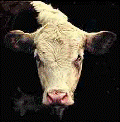Animal Science, Department of

Department of Animal Science: Dissertations, Theses, and Student Research
Date of this Version
8-2016
Document Type
Thesis
Abstract
In the design of economic selection indices, the relative importance of traits in the breeding objective is reflected by their relative economic weighting. The objective of this study was to develop two economic selection indices for Beefmaster cattle: one for a terminal production system and one for a maternal production system. The terminal index was developed assuming bulls are mated to mature cows with all resulting progeny harvested. The maternal index was developed assuming bulls are mated to a combination of heifers and mature cows, with resulting progeny retained as replacements or sold at weaning.
National average prices from 2010 to 2014 were used to establish income and expenses for each system. Economic values were determined by simulating 100,000 animals using SAS 9.3 and approximating the partial derivatives of the profit function by perturbing one trait at a time, by one unit, holding the other traits constant at their respective means. Relative economic values for the terminal objective traits hot carcass weight (HCW), marbling score (MS), ribeye area (REA), 12th-rib fat (FAT) and feed intake (FI) were 91.29, 17.01, 8.38, -7.07 and -29.66, respectively. Relative economic values for the maternal objective traits calving difficultly direct (CDd), calving difficulty maternal (CDm), weaning weight direct (WWd), weaning weight maternal (WWm), mature weight (MW) and heifer pregnancy (HP) were -2.11, -1.53, 18.49, 11.28, -33.46 and 1.19, respectively.
Selection criteria were chosen from expected progeny differences (EPD) currently reported by Beefmaster Breeders United (BBU). Index coefficients for the terminal selection criteria yearling weight (YW), ultrasound ribeye area (UREA), ultrasound 12th-rib fat (UFAT) and ultrasound intramuscular fat (UIMF) were 1.715, 0.806, -36.600 and 12.375, respectively. Index coefficients for the maternal selection criteria birth weight (BWT), WWd, WWm, YW and scrotal circumference (SC) were -1.371, 1.426, 0.945, -0.660 and 2.725, respectively. The application of these indices in operations with specific production goals would facilitate genetic improvement by aiding Beefmaster breeders in their sire selection decisions.
Advisor: Matthew L. Spangler


Comments
A THESIS Presented to the Faculty of The Graduate College at the University of Nebraska In Partial Fulfillment of Requirements For the Degree of Master of Science, Major: Animal Science, Under the Supervision of Professor Matthew L. Spangler. Lincoln, Nebraska: August, 2016
Copyright (c) 2016 Kathleen Pearl Ochsner